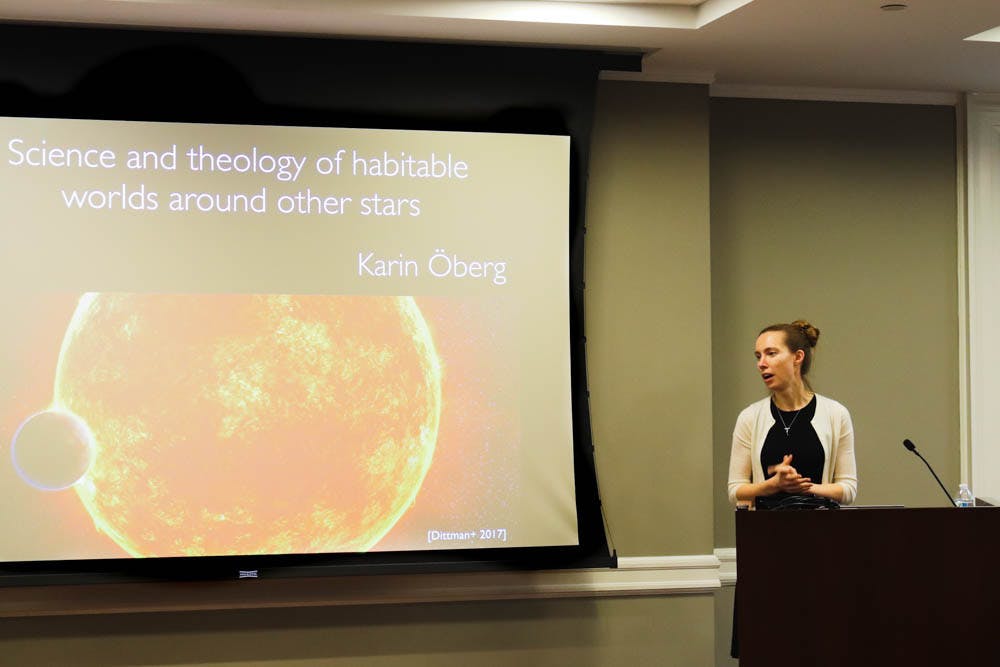“There is something very dignified about (God) allowing the creativity of the Universe to be present within it and slowly emerge, rather than just putting everything in order from the beginning,” said Karin Öberg, a professor of astrochemistry at Harvard, during a lecture titled “Science and Theology of Habitable Worlds around Other Stars” on Monday.
Öberg’s lecture took place as the final event in the Brown-RISD Catholic Community’s Thomas Becket Association Lecture Series. The series allowed the University to host lecturers who spoke on the intersections of religion and a wide array of subject areas, such as law and science, said Reverend Albert Duggan ’03.
During her lecture, Öberg delved into the theological implications of ongoing research into habitable planets and the presence of extraterrestrial life. Öberg, whose research team discovered the first complex molecule on a disk of dust and gas that surrounds a newly formed star — stressed that “there is no intrinsic psychological conflict between being a Catholic and a scientist.”
Öberg began her lecture by explaining the variety of scientific and religious models that describe the Universe’s structure. Following the formulation of the Big Bang theory, which outlined the expansion of the Universe that causes galaxies to grow further apart from each other, religious individuals advanced an alternative hypothesis: Through miraculous creation, new matter was constantly formed in the Universe to fill the gaps between galaxies.
Rather, Öberg said she believes the discovery of the Universe’s constant expansion suggests that “we seem to have a god that sets things into motion but then lets the Universe emerge … following its own laws.” She added that this system represents a “joy in creation … and seeing something change over time.”
In addition to articulating the religious ramifications of the Big Bang theory, Öberg also explained scientific efforts to discover habitable planets and life throughout the Universe. In order to classify a planet as habitable, scientists determine the distance between the planet and its host star to calculate the sustainability of liquid water on the planet. Drawing on data from recent studies, Öberg said “water turns out to be an extremely common thing we see in space … (and) where planets are forming.” With the presence of water and organic materials, “there are many planets that are physically habitable,” she added.
But while researchers cannot conclude that the Universe is “teeming with life,” Öberg said she found “austere beauty” in the idea of “Earth sailing through time and space with all the life in it.”
Öberg spoke on how finding rational life outside Earth would challenge humanity’s relationship with God. To answer this question, she relied on the writings of Saint Thomas Aquinas, who discussed the possibility of multiple incarnations of God and Jesus Christ that could offer salvation to extraterrestrial beings.
Marjorie Pang ’18 said her Catholic faith and belief in the compatibility of science and religion brought her to the lecture. “It’s interesting to hear from someone who shares that view,” she said, adding that the discussion taught her that “science perfects God’s creations.”
In bringing Öberg to campus, Duggan said he hoped to reassure students that they do not need to choose between faith and interest in academia. “A person of faith can use their faith and theological understanding to enrich the research that they do and, likewise, … use the research that they do to encourage probing of theological questions,” he added.

ADVERTISEMENT




